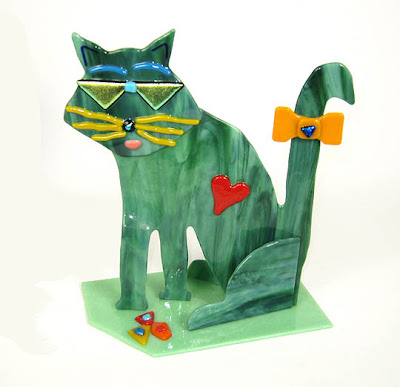Interior "Landscapes" That Create Small Worlds
Recently, I had the thrill of opening the May issue of Phoenix Home & Garden and seeing, on P. 132, a beautiful large photo of a recent painting of mine, called “Temptation.” That definitely made my day! The painting will be part of an exhibit at Colores in early May about “Interiors, Objects and Little Worlds.”
 |
| Temptation, Judy Feldman |
 |
| Never Leaving, Diane Barbee |
Several other Wilde Meyer artists share these interests. Diane Barbee uses interior furnishings to express her joy of color and her optimism about life. She, too, likes to create her own world through painting. In “Round Zebra Pillow,” Diane combines images of things she likes: a funky chair and ottoman with a giant zebra skin pillow, paintings of landscapes and a polka dot dress hanging jauntily from a window. In “Never Leaving,” she zeroes in on the chair itself, using fabrics in colorful, complimentary colors. The diverging lines on the chair cushion and the wood floor take our eye to the back wall, where there is more pattern.
 |
| Round Zebra Pillow, Diane Barbee |
 |
| My Real Life Big Screen TV, Lori Faye Bock |
Lori Faye Bock also has a personalized vision of interiors. In “My Real Life Big Screen TV,” she presents us with a view from a dining table of a fanciful, walled garden. Everything in this painting is interpreted in a whimsical way. The bold colors and the simplified furniture, flowers, vegetables and animals express an endearing wonder. You could say it’s child-like, but I think it’s more sophisticated than that.
 |
| Country House, Jacqueline Rochester |
For example, in “The Present,” the patterned tablecloth, scarf and woman’s dress all catch our attention, but they are not the focal point. Our eyes go to the dog and the gift behind him. The angles of the scarf and the wall corner direct us to the focal point. In “Country House,” the pale pink interior is so soothing, beckoning us to come in, rest and bask in the rays from large sunlit windows.
 |
| The Present, Jacqueline Rochester |
All these artists have their own personal style, but I would say that those of us who love to paint interiors aim to convey a feeling of contentment and joy to our viewers.



































